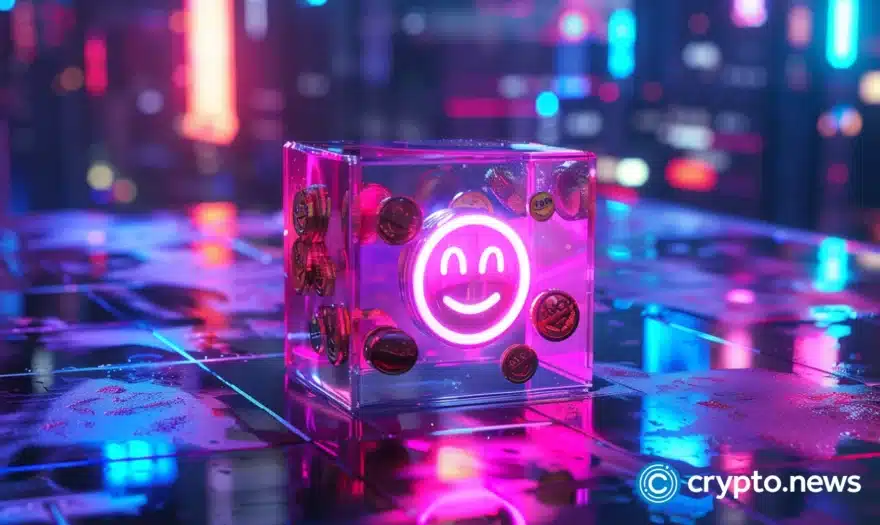Scamcoin soars with $1.17m market cap, $104k in 24h trading

Disclosure: This article does not represent investment advice. The content and materials featured on this page are for educational purposes only.
Scamcoin, a meme token on Solana, has turned satire into strength by embracing transparency and branding itself as “the only crypto honest enough to call itself a scam.”
Table of Contents
- Scamcoin has a market cap of $1.17 million with nearly its entire 1 billion token supply already in circulation, eliminating dilution risks.
- Its viral identity comes from embracing criticism, using the phrase “Scamcoin is a scam” as built-in marketing.
- The project’s value lies in its active meme-driven community, where culture and humor serve as the core product.
The crypto world thrives on hype. New tokens promise to disrupt industries, revolutionize finance, or launch massive ecosystems. Investors are drawn in by ambitious whitepapers, technical jargon, and long roadmaps that rarely deliver. When those promises collapse, communities are left disappointed, and trust in the industry erodes.
Scamcoin (SCAM), a meme token built on Solana, chose a different path. Instead of making promises it couldn’t keep, it leaned into satire and called itself “the only crypto honest enough to call itself a scam.” What sounded like a joke has become its biggest strength. By stripping away the hype, Scamcoin built an identity around honesty, and that honesty has gone viral.

Scamcoin by the numbers
Recent data from CoinGecko shows that Scamcoin is more than just a meme:
- Price: $0.001179 (up 5.7% in 24h)
- Market cap: $1,178,954
- Fully diluted valuation (FDV): $1,178,954
- 24h trading volume: $104,834
- Circulating supply: 999,954,587 SCAM
- Total supply: 999,954,587 SCAM
- Max supply: 1,000,000,000 SCAM
What stands out is that market cap and FDV are equal. This is rare in crypto. Most projects hold large token reserves for teams or investors, creating uncertainty about when those tokens will be released. Scamcoin avoids that risk entirely. With nearly the full supply already circulating, what you see is what you get.
This clarity removes fear of dilution and creates fairness across the board. Every holder participates under the same conditions, without hidden unlocks or insider advantages. For a memecoin, this level of transparency is unusual and refreshing.
Honesty as viral marketing
Scamcoin’s brand is simple: it calls itself a scam. Critics have no ammunition because the project embraced the insult before anyone else could. What would typically be damaging FUD becomes free marketing.
When people post “Scamcoin is a scam” on X (Twitter), they are technically spreading the project’s name and slogan. On Telegram, holders joke about belonging to “the scam that can’t scam you,” turning the parody into pride. Instead of pushing back against criticism, the community multiplies it until the joke becomes identity.
This viral honesty flips the script. Other projects collapse under accusations. Scamcoin thrives on them.
Community as the core product
Scamcoin doesn’t rely on complex utilities, detailed whitepapers, or promised updates. Its value comes directly from its community.
- On X (Twitter), hashtags like #Scamcoin are filled with memes, slogans, and viral jokes that keep the brand visible.
- On Telegram, holders have created an active hub where humor and parody are celebrated daily.
The culture itself is the utility. Every meme is free advertising. Every new holder strengthens the shared identity. In Scamcoin’s case, the meme isn’t just a tool but the product.
Why transparency makes the joke stronger
Satire would mean little without numbers to back it up. Scamcoin’s transparency is what turns the joke into a movement. The project demonstrates that parody can achieve measurable results with almost 1 billion tokens in circulation, a market cap of $1.17 million, and daily trading volumes above $100,000.
By removing uncertainty about token supply and embracing radical honesty, Scamcoin created an environment where holders don’t fear the future. Instead, they enjoy the present, laughing, sharing memes, and being part of something that doesn’t pretend to be more than it is.
The blueprint for viral honesty
Scamcoin offers a lesson for the broader crypto industry. Hype burns out, but honesty sticks. By admitting its flaws, embracing its critics, and supporting its community with transparency, Scamcoin shows a new way forward for meme tokens.
The blueprint is clear:
- Admit the flaw before anyone else can use it against you.
- Make the joke the brand.
- Support it with transparency and fairness.
- Turn community culture into the product itself.
It may not be the path for every project, but Scamcoin proves it can work.
Stay in the loop
Scamcoin started as a parody, but it has become an example of how honesty can go viral. Moreover, it built a community that thrives on humor and belonging by turning memes into its core utility.
To learn more, check out Scamcoin, follow the chaos on X(Twitter), join the fun on Telegram.
Disclosure: This content is provided by a third party. Neither crypto.news nor the author of this article endorses any product mentioned on this page. Users should conduct their own research before taking any action related to the company.














